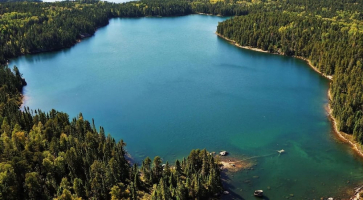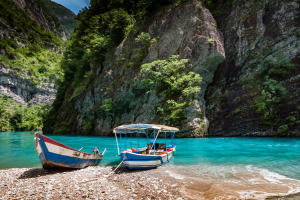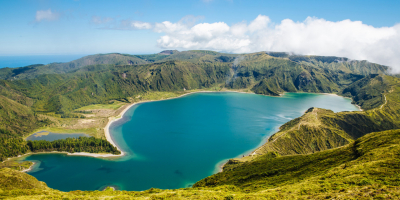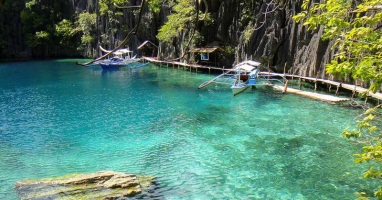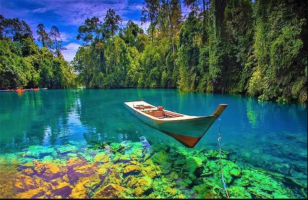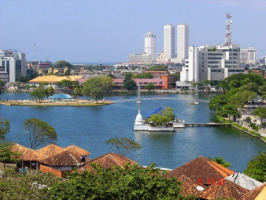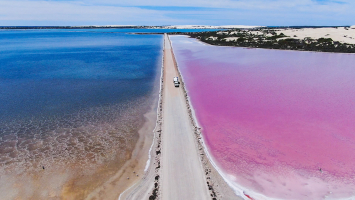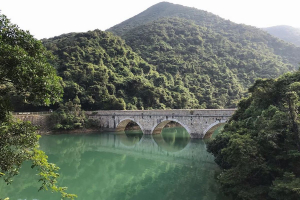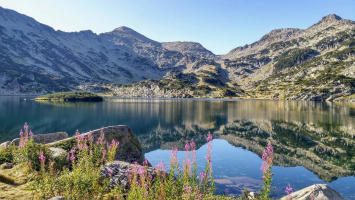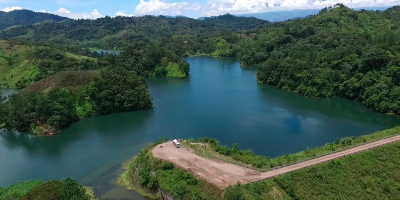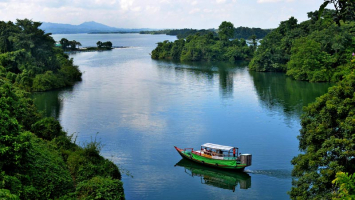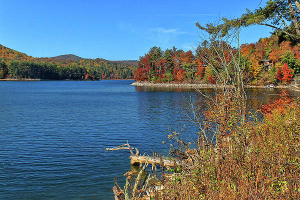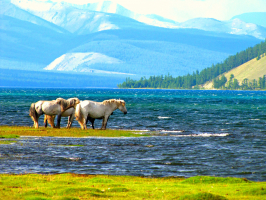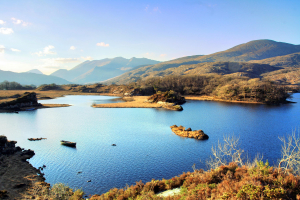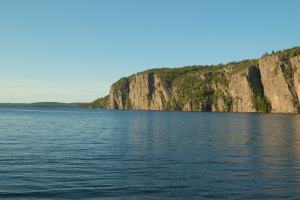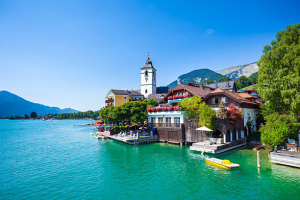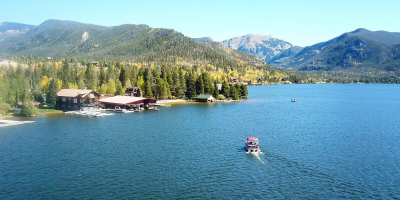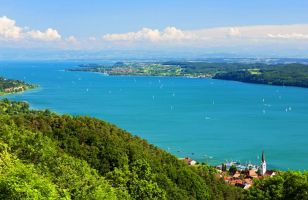Top 10 Most Beautiful Lakes in Pakistan
Pakistan is one of the nations that has been endowed with a wealth of natural beauty, including mountains, plants, lakes, and several historical monuments. It ... read more...is a magnificent creation. Some of the most breathtaking and gorgeous scenery on earth may be found in Pakistan's northern regions. The area is home to several lakes, many of which are unknown to the majority of the people, in addition to the picturesque valleys. So, while visiting the northern districts of Pakistan, think of seeing some of the nation's most beautiful lakes to enjoy the finest of the country's breathtaking landscape. There are some most beautiful lakes in Pakistan you should not miss below!
-
First of all, one of the most beautiful lakes in Pakistan is Lulusar Lake. The Kunhar River's primary source is Lulusar Lake. One of Pakistan's many beautiful lakes, it is regularly frequented by both locals and foreign tourists who come to admire the country's natural splendor. The beauty that is reflected on the lake's lid is what makes this lake in Pakistan the most beautiful in the country. It has a significant negative effect on tourism. Its easy-to-drive, paved roads are another factor that makes the lake so well-known.
From the nation's capital, Islamabad, it takes roughly 8 hours to go through Muzaffarabad. Up until it intersects with the Jhelum River, the water from Lulusar Lake runs southwest across the entirety of Kaghan Valley, passing through Naran, Jalkhand, Kaghan, Jared, Balakot, and Paras. About 31 miles or 50 kilometers separate it from Naran. Due to its beauty and altitude, Lulusar Lake has been ranked among the top 10 tallest lakes in Pakistan. It is impossible to dispute the important role this lake is playing in boosting tourism in Pakistan.
Location: Kaghan Valley, Mansehra District, KPK
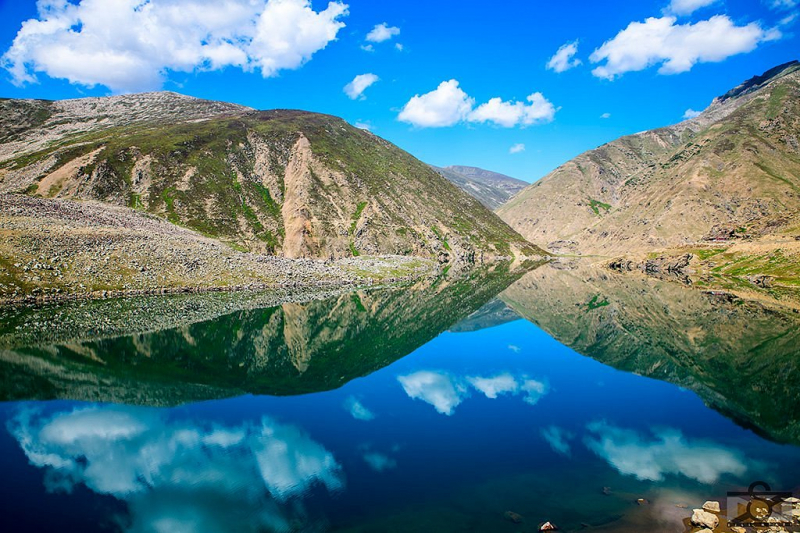
Photo: https://www.tripadvisor.com/ 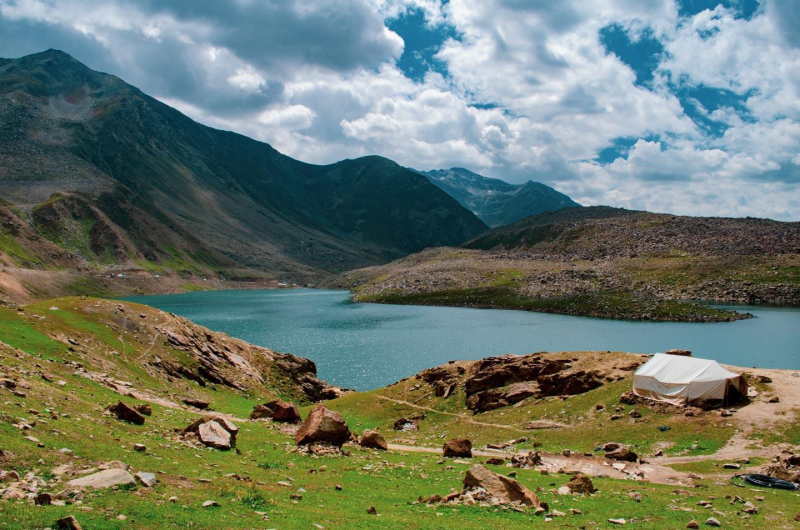
Photo: https://guidetopakistan.pk/ -
Attabad Lake, another stunning high-altitude lake in Pakistan, is said to be the country's most panoramic location. It is also considered one of the most beautiful lakes in Pakistan. It may be found in the Hunza Valley village of Gojal in Gilgit Baltistan. It is extremely natural in Attabad Lake. One feature of this lake is that, until a landslide blocked up a section of the River Hunza in 2010 and created Attabad Lake, it was not even indicated on the map. Due to its closeness to Gojal town, the lake is also known as Gojal Lake. We all know that Gilgit-Baltistan is regarded as the city of lakes in Pakistan, and Attabad Lake is located approximately 30 minutes to the east of Karimabad, the Hunza District's seat.
One of Pakistan's most popular tourist attractions is the lake. However, the Pakistani government plans to build a dam next to the lake due to the rise in water levels. Attabad Lake, the biggest lake in Gilgit-Baltistan, spans 13.5 square kilometers and is a popular tourist destination for both domestic and foreign travelers. The lake's captivating blue waters are 358 feet deep, and travelers enjoy boating, swimming, and jet skiing while taking in views of the gorgeous mountains.
Location: Attabad, Gilgit−Baltistan, Pakistan
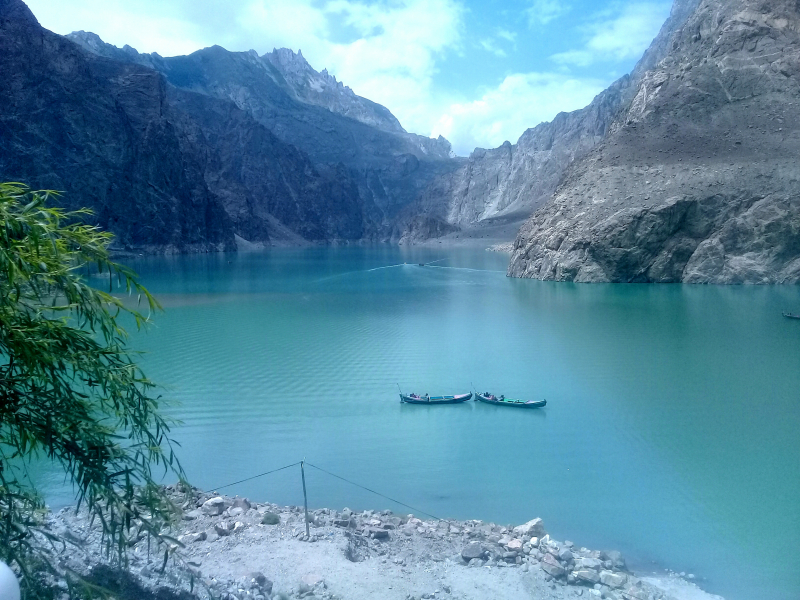
Photo: https://en.wikipedia.org/ 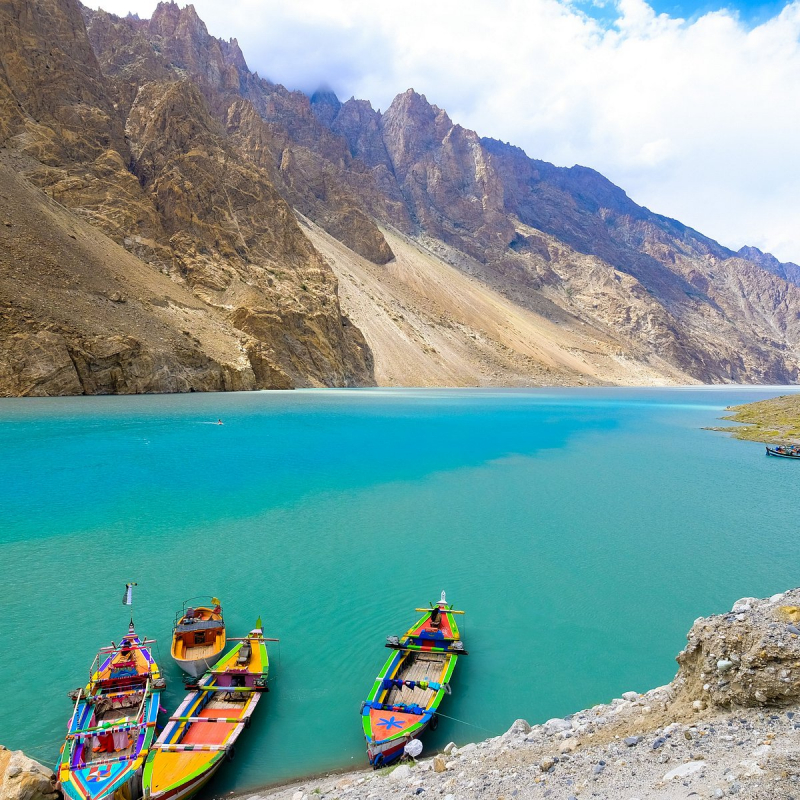
Photo: https://www.tripadvisor.com.vn/ -
The river Kunhar's main source, Saiful Muluk, lies near the town of Naran in the Kaghan Valley's northern region. Saiful Muluk is listed as one of Pakistan's top ten tallest lakes. The elevation of this lake is around 3,224 meters (10,578 ft). It is 1.06 square miles in size and has a depth of roughly 50 feet. A glacier moraine that prevented a stream from flowing through Kaghan Valley created Saif ul Muluk. The lake, which is the source of the Kunhar River, is surrounded by snow-capped mountains, and the glaciers that are melting from these peaks continue to feed the lake. You can reach the lake via a jeep ride from Naran Valley in about 30 minutes.
The valley was built during the Pleistocene era, which ended more than 300,000 years ago. This region developed depression as a result of the melting glaciers and rising temperatures. The name of the lake, Saiful Muluk, honors a legendary Persian prince who fell in love here with Princess Badri-ul-Jamala. Saif-ul-Muluk is a fairy tale written by Muhammad Bakhsh. The urban mythology that fairies visit the lake on moonlight evenings is another way locals amuse visitors. At the lake, you may sleep beneath the stars close to the shore and enjoy daytime activities like boat rides on the calm, cool waters or snowball fights.
Location: Kaghan Valley, Khyber Pakhtunkhwa
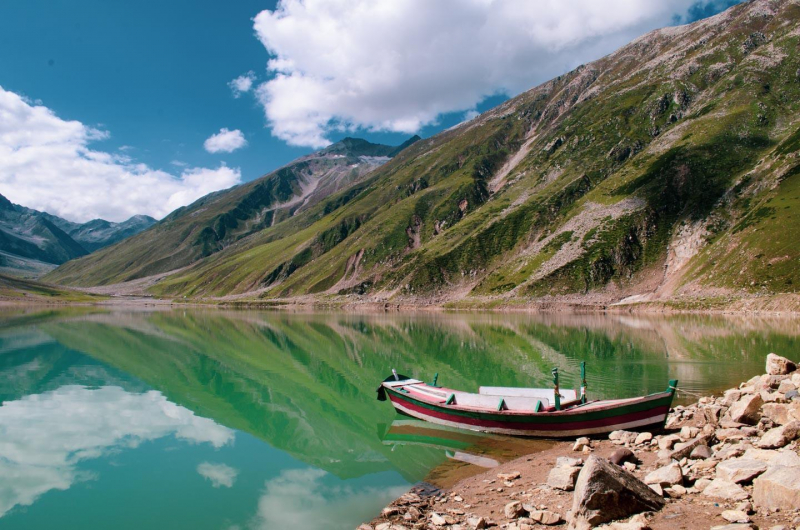
Photo: https://guidetopakistan.pk/ 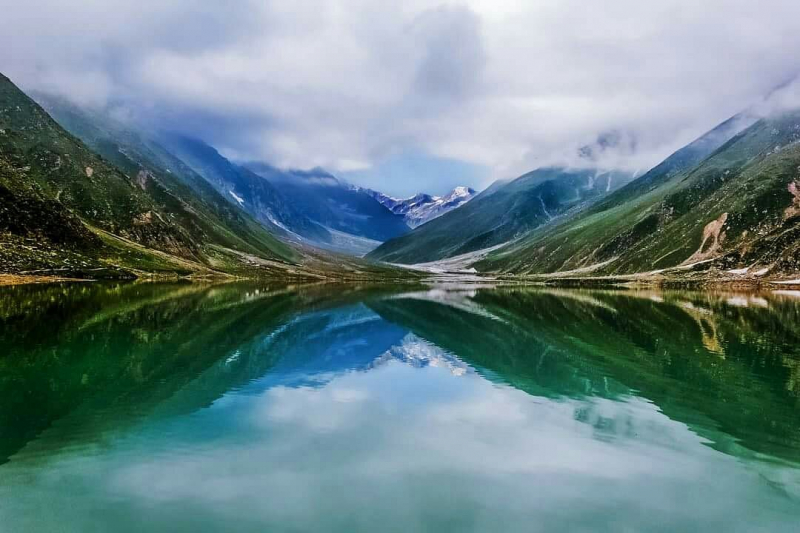
Photo: https://www.tripadvisor.com.vn/ -
The name Ansoo, which means a teardrop in Urdu, conveys the narrative. Visitors and hikers are drawn to the area by the lake's unique shape. The lake has a teardrop form. One of the world's most beautiful lakes, it may be located in the Malika Parbat area of the Himalayan Mountains. Specifically, when the snow melts off the hill in the summer, there is a common misunderstanding about this lake it has a frozen island in the middle that reaches the iris and a height above the lake that reaches the eyebrow.
Ansoo Lake was created in 1993 as a result of the Pakistan Air Force's (PAF) low-flying jet spotting the lake and its peculiar shape. However, there is no way to satisfy your urge if you intend to stay close to this lake. In the past, travelers slept out in the icy winds. Residents in the area are strongly opposed to camping there because they believe the weather is too unpredictable.
People rely on camping in the icy winds since there is nowhere to stay close to the lake. The majority of locals caution against doing this, nevertheless, as the weather in the region can be quite unpredictable. From Saiful-Maluk Lake, which is a 12-hour round trip walk via icy paths, the lake is accessible via a brief but arduous hike.
Location: Kaghan Valley, Khyber Pakhtunkhwa
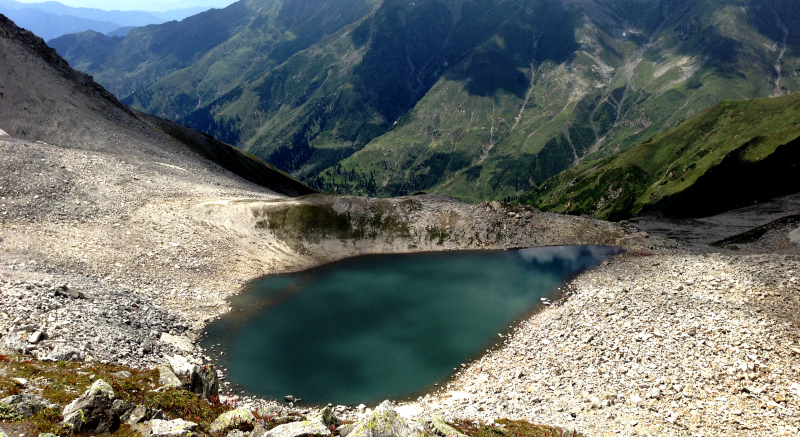
Photo: https://en.wikipedia.org/ 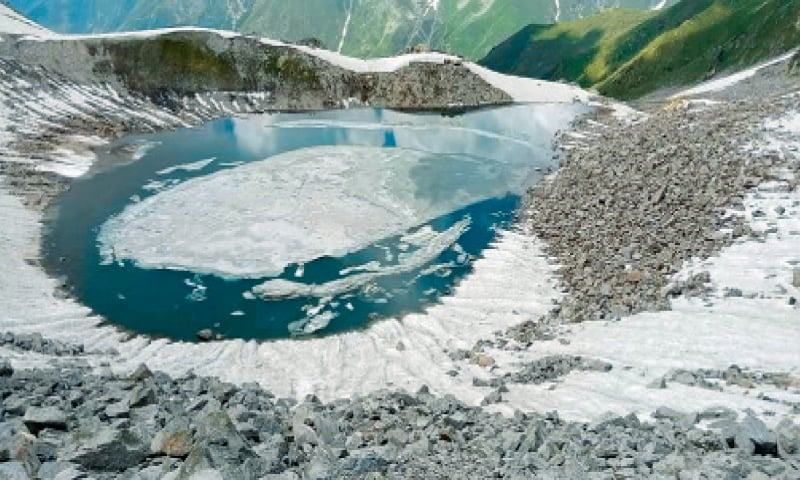
Photo: https://www.dawn.com/ -
The most prominent lake in Pakistan is Lake Manchar. The largest lake in South Asia and Pakistan is Manchar Lake. This lake, which has a surface size of around 100 square miles, is well-known for having fresh water from the ground. It is situated in Jamshoro District and Dadu District in Sehwan City, south of Sindh, west of the Indus River. There are a lot of little parks close to these lakes that people may go to and enjoy with their families.
The fact that this magnificent lake receives freshwater from several little streams in the Kirthar Mountains and empties into the magnificent Indus River is astounding. The finest element is that the lake's surface area changes depending on the climate (from 36 km2 to 500 km2), especially during the monsoon season. Another factor contributing to the lake's popularity in Pakistan is that it is surrounded by ancient historical sites including Wahi Pandhi, Ghazi Shah, and Ali Murad Mound.
The oldest sites, which date back to the Harappan Culture, are the Lal Chatto, Mashak Lohri, and Lakhiyo, which are situated along the Lake Manchar boundary. This most stunning lake in Pakistan only has an average depth of 2.5 to 3.75 meters. One of those lakes, Lake Manchar, serves as the ideal illustration of how stunning Pakistan is.
Location: Sehwan city in the south of Sindh
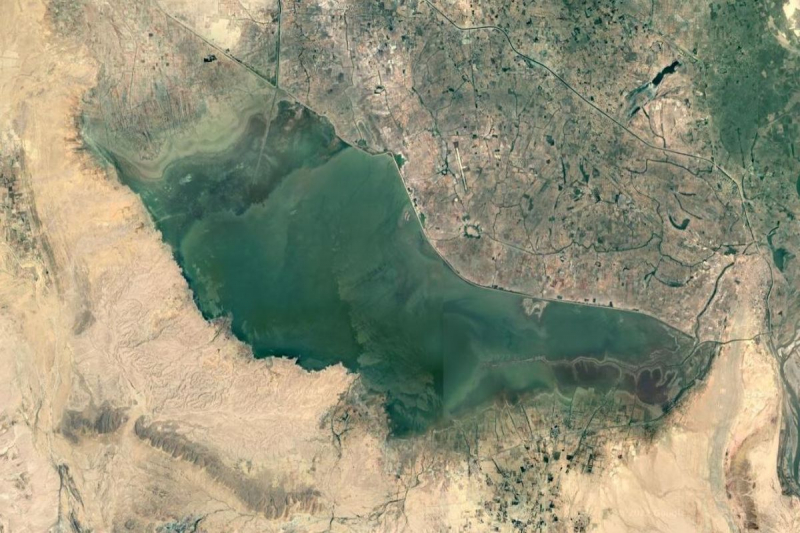
Photo: https://www.bloomberg.com/ 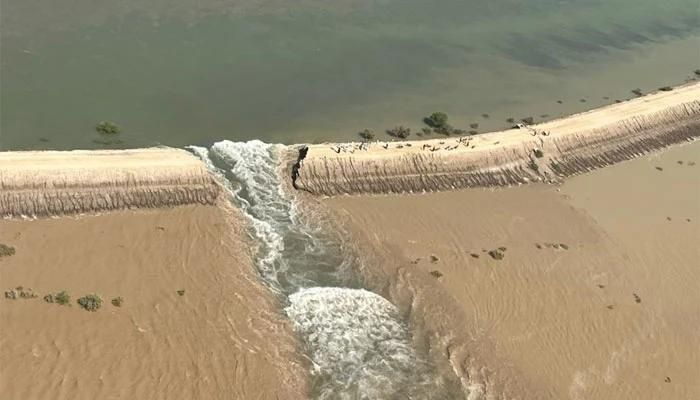
Photo: https://www.geo.tv/ -
One of the beautiful lakes in Gojal, Hunza Valley, Gilgit Baltistan, Pakistan, is called Borith Lake. Greenery surrounds the lake, and the locals frequently irrigate their gardens there. Approximately 2,600 meters (8,500 feet) above sea level is where the lake is located. One of the most well-known lakes in Pakistan is due to the beauty of the lake and its surroundings.
The lake is well-known for several things, including the stunning view of the surroundings and the tranquil, serene ambiance of the lake. Ghulkin Glacier provides water for the lake. The Lake is 2 kilometers north of Gulmit, and travelers may get there by walking or by vehicle. There is a 2-kilometer dirt jeep route, and the walk via Gulmit village might take two to three hours.
Beautiful migrating birds and animals may be found in their natural habitat at Borith Lake. Therefore, the lake is frequented all year round by birdwatchers and wildlife photographers. The ideal times to visit the picturesque lake are in March and June if you want to see the ducks gathering.
Location: Gulmit, Hunza Valley, Gilgit–Baltistan
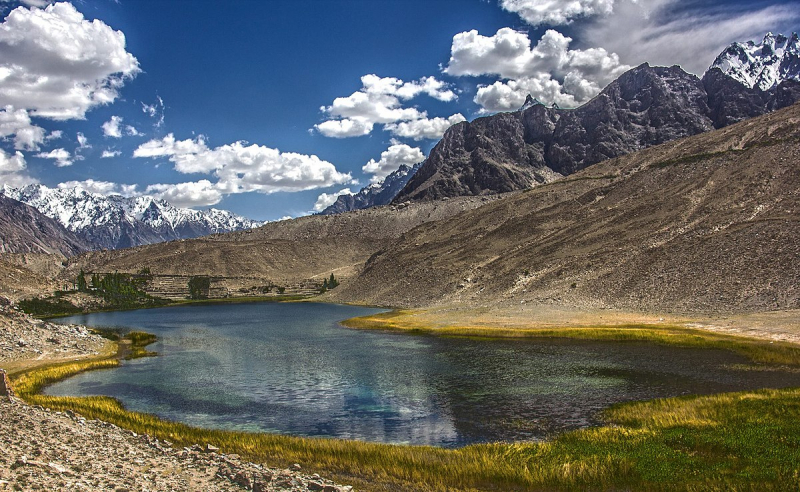
Photo: https://commons.wikimedia.org/ 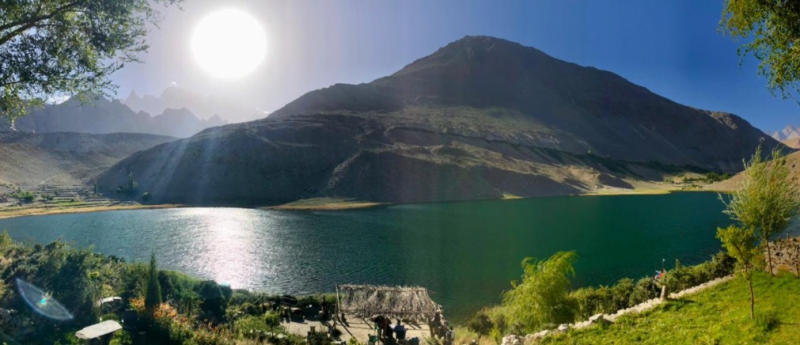
Photo: https://baltistantimes.com/ -
One of the most beautiful lakes in Pakistan on this list is Rama Lake. In Gilgit Baltistan, Pakistan, close to Astore, on the eastern slopes of the Nanga Parbat, lies a picturesque lake known as Rama Lake. At 3300 meters (10800 feet) above sea level, the valley is located.
One of Pakistan's most picturesque lakes is Rama Lake. Numerous excellent photo chances are provided by the lovely birds, captivating water, and picturesque surroundings. With sunshine, the lake's hue changes considerably. From dark green, it changes to greenish-blue. The flat, bluish-green lake reflects the surrounding peaks, much like Nanga Parbat.
Since it is so high, the lake is always frozen from December through March, but throughout the summer, it is warm enough to swim in. Rama Lake is a popular tourist destination because of the breathtaking views of the warm, changing colors of the lake and the animals. Visitors who want to linger on the lakeshore longer than usual are mesmerized by the lake's ethereal ambiance.
Location: Astore District, Gilgit−Baltistan
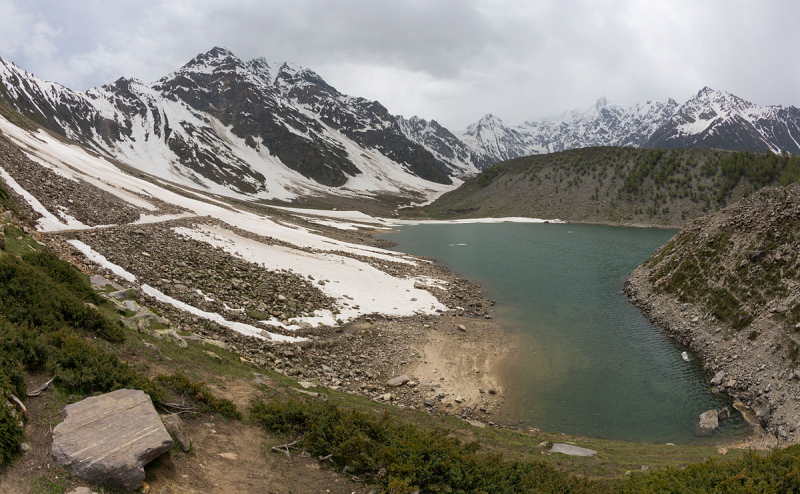
Photo: https://en.wikipedia.org/ 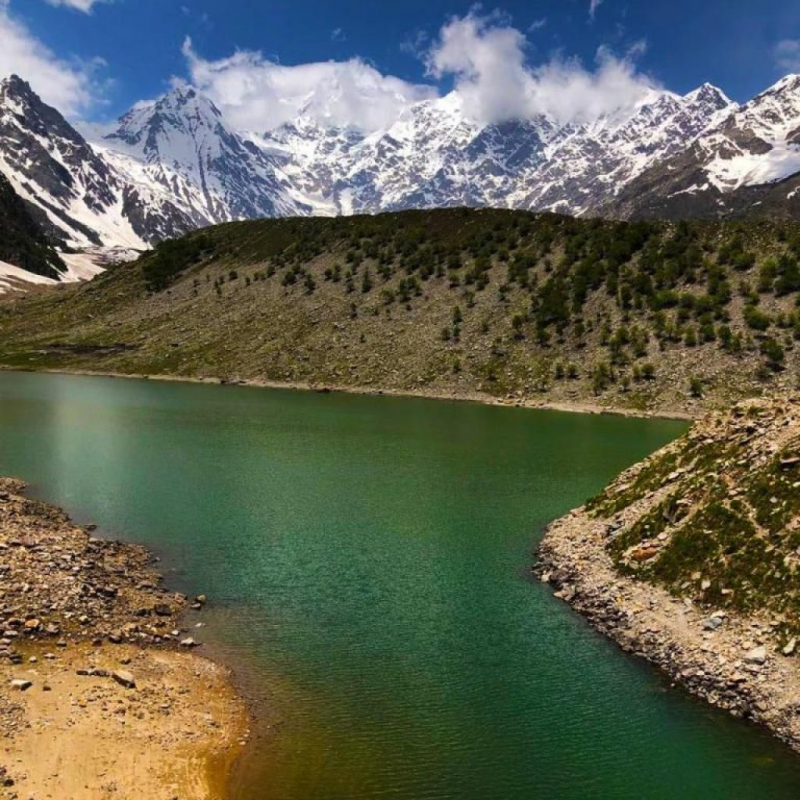
Photo: https://www.theventuretours.com/ -
Mahodand Lake, often known as the "Lake of Fishes," is a stunning body of water in the heart of Swat. The lake is located in the valley of Ushu, which is a component of the Hindu-Kash mountain range, 40 kilometers from Kalam. The lake is well-known for its appeal and distinctive qualities. Even in the height of summer, Mahodand Lake has a lovely, chilly, and windy climate.
The lake is 2 kilometers long and 9400 feet above sea level. If you intend to get there, make sure to go by jeep early in the morning because the trip takes three to four hours. The location is blanketed with snow throughout the winter because of its high height. Therefore, October is the greatest month to come based on the weather at Mahodand Lake since you can have the most fun.
At the breathtaking location, visitors may go boating, fishing, horseback riding, and other activities. One of the most serene and desirable lakes in the Swat Valley is Mahodand Lake.
The lake is bordered by woods and meadows and is situated at the base of the Hindukush Mountains, adding to its natural splendor. This lake is nourished by melting glaciers from the mountaintops. This lake is also the source of Ushu Khwar, one of the River Swat's main tributaries.
Location: Usho, Swat Valley, Pakistan
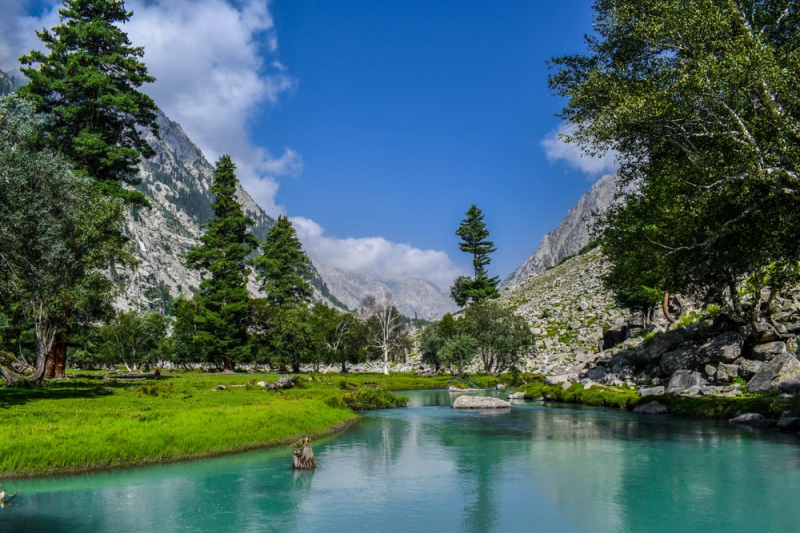
Photo: https://www.getout.pk/ 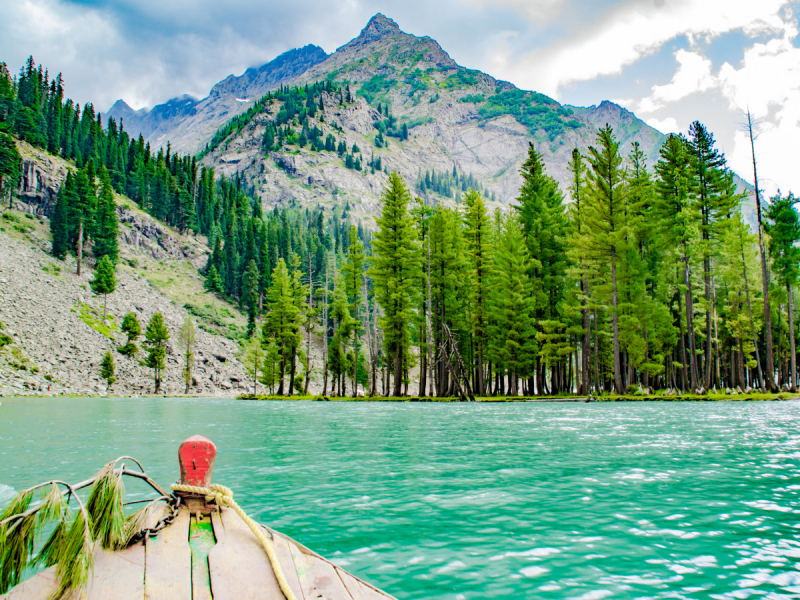
Photo: https://www.herotraveler.com/ -
In Kaghan Valley's Lulusar-Dudipatsar National Park, the Dudipatsar Lake can be found. The lake's English name, White Mountain Lake, refers to the surrounding snow-capped mountains that surround the body of water. It is only accessible in the summer and is referred to by locals as Dudipat Lake. It can only be accessed on foot.
For local wildlife and migrating birds, the lake and its wetlands habitats are of major ecological value. The Himalayan snowcock, black bear, marmot, weasel, lynx, leopard, and snow partridge are just a few of the park's animal inhabitants.
You may climb the 15 kilometers to the lake in less than 10 hours after leaving your car in Besal, one hour from Naran. Depending on your pace and degree of fitness, the time might change. The vistas are breathtaking, and if riding a horse up the mountain sounds more appealing to you than trekking, it is an option.
Location: Kaghan Valley, Khyber Pakhtunkhwa
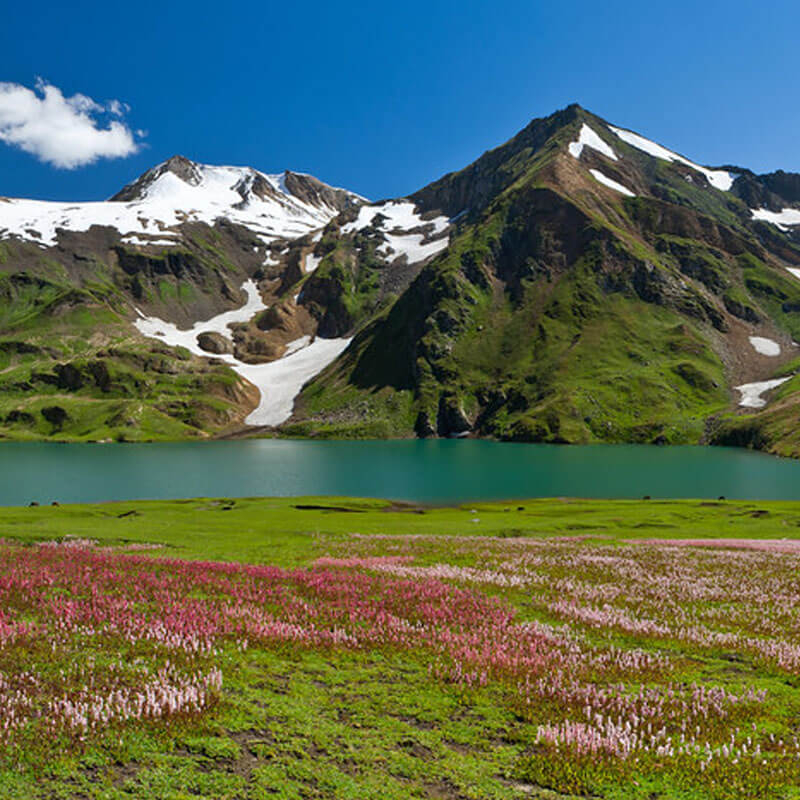
Photo: https://clickpakistan.org/ 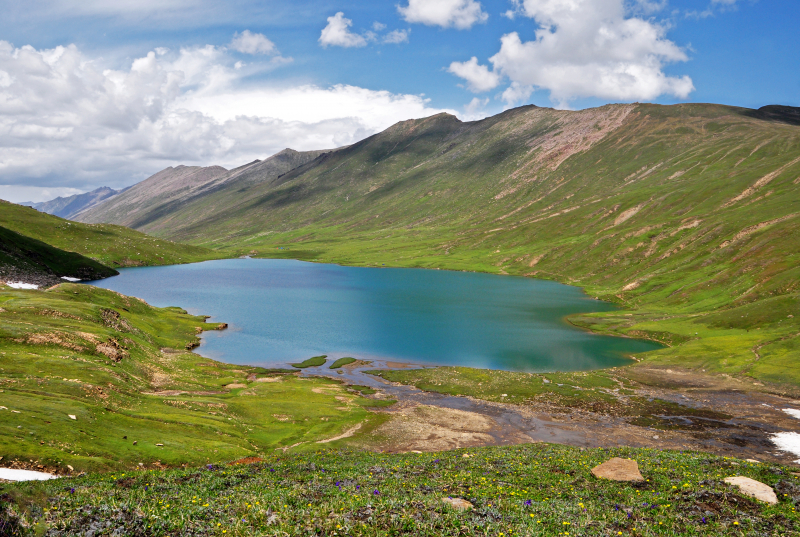
Photo: https://vi.m.wikipedia.org/ -
In the Kumrat Valley in Swat, close to the settlement of Katora sits Katora Lake. Katora Lake is located in the upper Jahaz Banda mountains at a height of 11,500 feet (3,500 meters) above sea level. It is located in KPK's Upper Dir District. As a result, you will undoubtedly see the lake's crystal-clear, verdant environment.
Tourists may visit the location after traveling via Jahaz Banda. It's a really lovely piece of water, Katora Lake. The waters of the nearby glaciers that are melting feed the lake. The word Katora, which means "bowl" in Pashto (Bowl Shaped), is likely how you will describe the lake's stunningly clean, emerald-greenish water.
First and foremost, there is a 4 to 5-hour climb from Thal village to Jahaz Banda to get to this lovely lake. After all, hikers spend their night's camping in the Jahaz Banda Meadows, where the night sky is filled with countless stars. The next day, a 3 to 4-hour trek was needed to reach a lake that had one side. Without a certain, you must spend at least four days traveling across the lake from Lahore to Islamabad.
Location: Kumrat Valley, Upper Dir
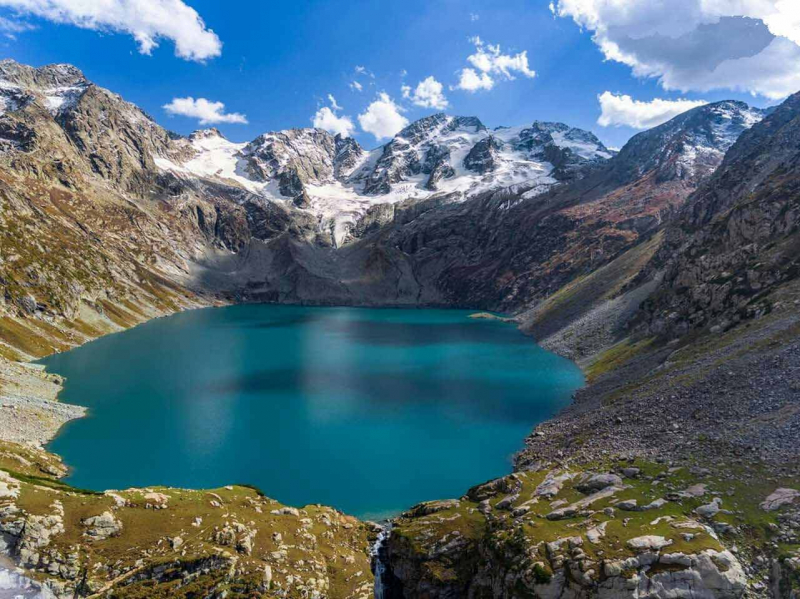
Photo: https://thetouristnest.pk/ 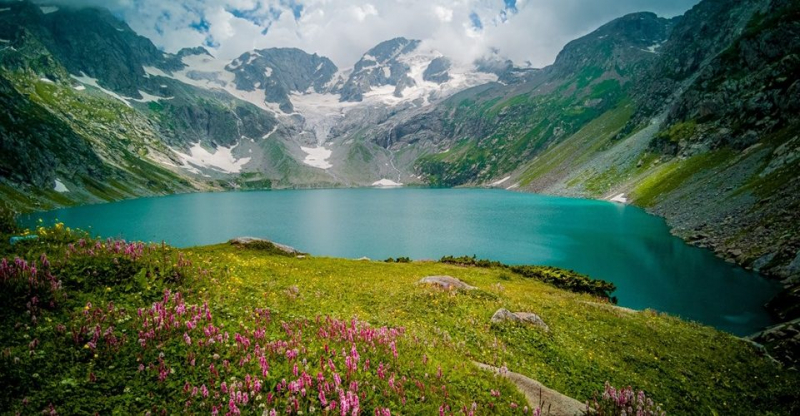
Photo: https://www.natureadventureclub.pk/













